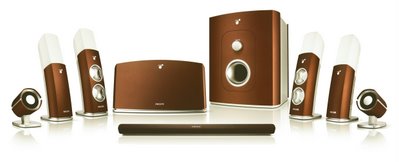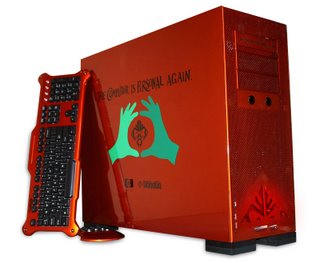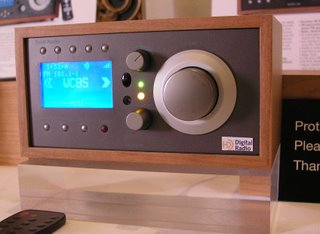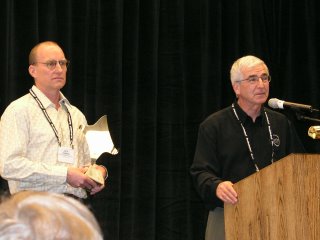If you have a cast-iron stomach and a computer that's even tougher, this indeed is your season. No, no summer or fall, but
beta season, courtesy of Microsoft Corp.
If you can't wait to get your hands on the next versions of Microsoft's anchor software products, a trip to
Microsoft's Web site may leave you giddy. Right now you can download free or almost-free, almost-finished versions of
Windows Vista, the next iteration of Microsoft's Windows operating system software;
Internet Explorer, its Web browser and
2007 Microsoft Office, the next generation of its business application suite.
Keep in mind that beta, or so-called "release candidate" software aren't fully baked yet and may still have bugs in them, though hopefully no major ones. Microsoft recommends that you back up all important data and states that beta software is "not appropriate for production use." Microsoft offers no support for beta software.
Nevertheless, if you have the nerves and the stomach, the betas are ready.
Internet Explorer 7The next version of Internet Explorer will include a number of new features, including tabbed browsing, a feature already familiar to users of other browsers like the Mozilla Foundation's
Firefox. The version that's available for download is a "release candidate," which is a half a step beyond a beta version but still not quite done.
The
IE7 Release Candidate 1 download is free but will cost you up to 12MB of hard disk space, according to the
system requirements posted on the IE7 Web site. Once you install IE7 RC1 you can use an
upgrade checklist to make sure the browser works correctly with your favorite Web site.
Windows VistaLike the real thing,
Release Candidate 1 of Windows Vista will demand a lot from your PC, especially from its graphics system. Vista's new Aero interface is only accessible to PCs with enough graphics muscle.

Short of that, Vista will run but will dumb itself down to a more Windows XP-type interface. Thus make sure you check out
Vista's requirements before you get started.
Before you do anything you can evaluate your PC with the
Windows Vista Upgrade Advisor, also available on the Vista Web site. Note that many new PCs with today's Windows XP operating system are being sold as Vista-ready, thus letting you know that the units will be able to handle the upgrade.
Installing a new operating system is serious business. If the installation fails and you don't have backup files or your old operating system installation disks, you could end up in a dark place indeed. You can download the software or order it on a CD and pay shipping charges. The Vista release candidate software will expire on June 1, 2007, at which time you'll need a real version of Vista to keep your PC working.
2007 Microsoft Office
For Beta 2 of
2007 Microsoft Office you have a choice of
downloading the beta software or
test driving its components online via your Web browser. If you take the test drive, you'll have to have to install the Citrix Browser Plug-in into your browser, but this can be done automatically while you're at the Office test drive Web site. You can try out each of the Office components, including Word 2007 (right) which offers some new blog publishing features.
The beta software download will cost you $1.50 and will be anywhere from 75MB to 1GB in size, depending on your PC's setup. Note that the Beta 2 software will "expire" and shift down to a "limited functionality mode" as of February 1, 2007. At that time many key functions will be disabled.
Pricing for 2007 Microsoft Office is posted on Microsoft's Web site.
Zune, Zune, Zune
Not it's not beta software, but also at the almost-ready stage is Zune, Microsoft's challenger to Apple Computer Inc.'s popular iPod digital music player.
Microsoft announced on Sept. 14 that the unit, which will come in black, blue and white, will be available by the holiday shopping season.
The Zune, shown at right, will offer 30GB of data storage, which Microsoft says is enough for up to 7,500 songs, 25,000 pictures or up to 100 hours of video. The unit has a three-inch color screen as well as an FM radio tuner. It will offer a wireless feature which will make it possible to share music wirelessly between two Zunes. The recipient of a copy-protected song sent this way will be able to listen to the song up to three times in three days before he has to pay for it in order to keep it. The recipient won't be able to forward a received song, according to Microsoft. The unit will be linked to Microsoft's new Zune Marketplace music service, which will go toe-to-toe with Apple's well-established
iTunes Store.
Do you have something to say about Microsoft's many, many betas? Let me know below.
 Whoosh! What was that? Never mind: It's just your PC blowing in your face. Huh?
Whoosh! What was that? Never mind: It's just your PC blowing in your face. Huh?
 more titles will be announced soon, according to Philips.
more titles will be announced soon, according to Philips.
























.JPG)

















